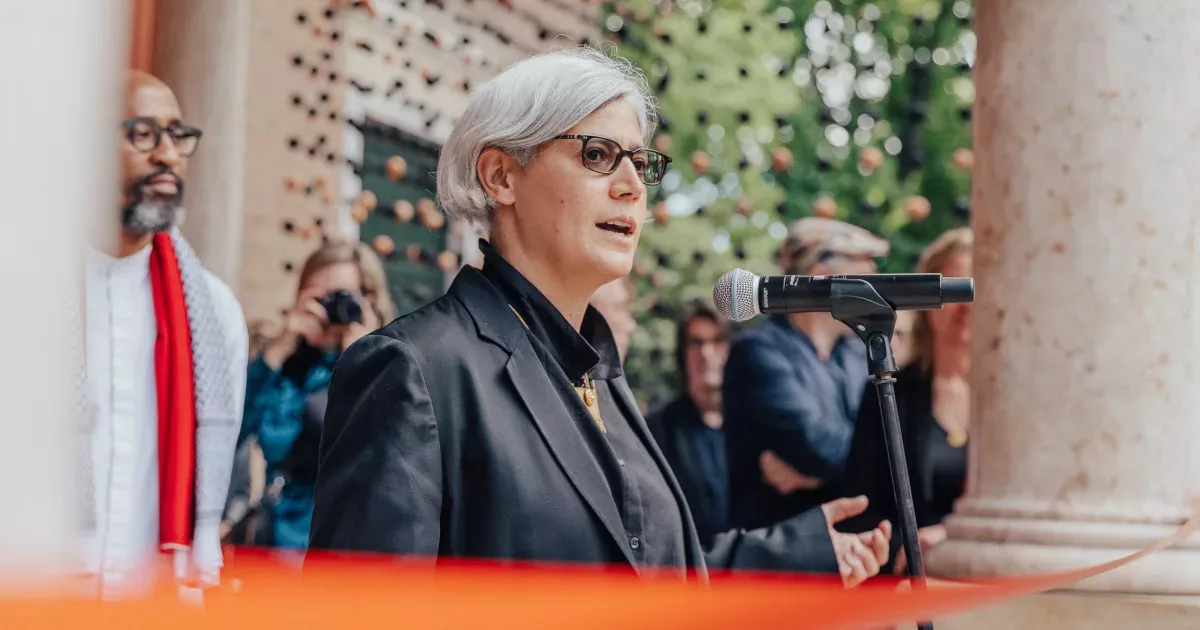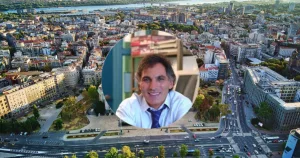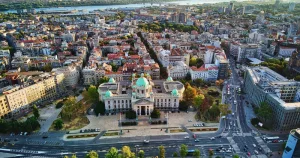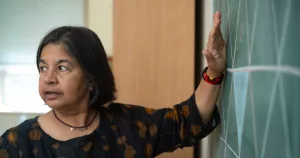Kathryn Yusoff: “We need new imaginaries to reset the relation between Earth and humanity”
Geographer Kathryn Yusoff explains why traditional disciplines and Western frameworks fail to address environmental crises, calling for transdisciplinary, decolonial approaches to planetary repair

You are a professor of Inhuman Geography: is this field name officially recognised?
Kathryn Yusoff : On appointed as a professor, you can choose your discipline area within geography. I chose the sub-discipline of “inhuman geography” because my work sits between human and physical geography, focusing on the inhuman, both as a theory and a method for understanding the earth. I examine how populations are targeted through the weaponization of the environment (inhumane acts) and how Western thought often separates humans from the Earth, treating inhuman worlds as natural resources or dead matter (rather than the context for all life). Inhuman geography aims to break these colonial binaries of bios and geos to reconnect human and inhuman worlds, in ways that allow us to rethink the material power dynamics of culture, law, epistemologies and ontologies. In short, I am interested in how decolonisation is a practice of doing environmental politics.
Could you illustrate with an example of your current research?
K. Y.: One of the areas I am working in now is what I call “inhuman reparations.” The International Court of Justice recently recognised climate change-related reparations as part of mechanism for mobilising planetary equity for “minimal” polluters, such as small island states and Arctic Indigenous communities. But these reparations are based on present conditions, not the histories of environmental exploitation that create historic paradigms of vulnerability. I explore how reparations can address long-standing colonial environmental damage and engage more open-ended work of repair to the colonial material impacts on marginalised and racialised communities; reparations can be considered as both imaginative, material and structural.
You are also a member of the Planetary Portals Collective. What is this about?
K. Y.: We are a collective of geographers developing new ways of conceptualising and cartographising space through the method of the “portal”; understood as a planetary relation that connects distant geographies in transformative relations. We study colonial legacies, environmental damage, and what we call “epistemic harm.” For example, in South Africa, we examined how Cecil Rhodes’ mining activities (that started in East London where we are based) left environmental residues and structures that continue to harm communities today. Especially, we have collaborated with Lesley Green and Environmental Humanities South (EHS) at the University of Cape Town, to develop mechanisms to both recognize harm and consider forms of restitution. Even when statues are removed, the environmental legacies of colonialism and imperialism often remain. We also connect these colonial histories to new forms of exploitation in the material geographies of AI. In a recent exhibition at the London Photographers’ Gallery, we explored the environmental impact of AI in Africa in the context of these earlier (imperial bad) dreams of Africa. Data centres built or planned in South Africa have enormous amounts energy and water demands, often in water-scarce regions, while recognising minimal African languages in their Large Language Models . In a way, AI can be considered the new mine and colonial geography.
Why work with artists instead of doing “regular” geography?
K. Y.: Geography is defined by imaginaries as much as it is by material and ecological relations. Culture is key to the imagination and thus to the sovereignty of life, so producing new cultural forms is also about producing new forms of life. Power over planetary imaginaries, who gets to describe the Earth, is often concentrated in a few actors, first colonialists and now tech companies. Working in exhibition and cultural spaces helps communicate environmental issues through aesthetics and public engagement. For me, art, exhibitions, and poetry can retool our imagination. For instance, I’m co-curating the UK Pavilion at the 2025 Venice Architecture Biennale with the Kenyan team Cave Bureau and Owen Hopkins. Our exhibition, GBR: Geology of Britannic Repair, links the environments of the UK and Kenya, reframing architecture as a geological practice that produces visions of the past and future, as well as drawing attention to the material fact that every building is a mine, using water, minerals, and energy. We created an “Earth Compass” showing each country’s emissions as scars, requiring visitors to physically orient themselves in relation to their nation’s environmental impact, thus becoming the embodiment of a compass. Thousands of people will see that exhibition: it is a way to have those conversations of repair in public, open questions, and generate a different sense of possibility in how we build worlds.
What is your academic trajectory?
K. Y.: I trained in history and philosophy, and then the arts, before earning a PhD in geography, where my research was focused on Antarctica. Early on, I worked on climate change, especially in the polar regions where it was most visibly impacting. Over time, I realised how deeply racialised colonial histories shape environmental experiences and equity, and yet how absent this discussion was in the deliberative political spaces of the environment. Western environmental thought has long centred (white) colonial subjects, ignoring the racial and geographical inequalities that its world-forming material practices engineered. Addressing these inequities is now central to my work, and central to a liveable environment for all.
Would you call yourself an artist?
K. Y.: I am a geographer, insomuch as that is how I am disciplined. But my interest is always in how to live collectively with the Earth and that is a political and aesthetic project. Aesthetics and pedagogy are where justice resides: how to bring people into spaces where they can engage with ideas differently or ideas of difference? We all know that the lesson alone is ineffective, if first there is not a curiosity about learning, an openness to being changed by that encounter. Working on the Venice Biennale reconnected me with making that space of alteration. We covered the British Pavillion in Kenyan beads and ecobrickets and called this “Double Vision”, so people would question what they were seeing. What was Britain (GBR) through these “other earths” (a Geology of Britannic Repair, perhaps)?
You participated in 2024 to a working group’s meetings of The Earth-Humanity Coalition. How do you see its importance and priorities?
K. Y.: It is crucial. Policy, academia, and public discourse are often so siloed. We need transdisciplinary connections to produce different geographical imaginations of the Earth. Knowledge practices have been fragmented since the 17th century. We need to put knowing and knowledge back together in ways that take account of historic, institutional and regional power differences, as well as apprehending the possible scope of what counts as knowledge and who counts as a knowledge producer. Practically, this means engaging with diverse environmental traditions—especially those suppressed by colonialism and necolonialism, like decolonial environmental traditions and precolonial environmental philosophies in Africa, Asia, Latin America and the Caribbean. Global forums often impose a monolithic vision of the Earth and the future from a Western perspective. We need a plurality of knowledge systems to imagine alternative planetary futures and understand the sedimentations of the past that impede this.
Why not do this within an existing geographical society?
K. Y.: Geography involves working across human and physical worlds, and so is about as close as it gets to a truly indisciplinary subject, but it has colonial origins which it has not entirely reckoned with. We need broader transdisciplinary work, connecting social sciences, arts, sciences and other fields, to challenge dominant worldviews in the context of policy and publics. Right now, tech companies are shaping planetary imaginaries that the planet itself cannot sustain. Our role is to offer alternative visions and geographic imaginaries.
Interview by Luc Allemand
SUBSCRIBE TO OUR NEWSLETTER
To stay up to date with our projects and the development of the EHC
Read more articles

The Moon & the Global South: Voices, Risks & Promise
Researchers warn that without inclusive governance, the Moon could become “a new arena for old patterns of exclusion” When rockets

Borko Furht: “AI shouldn’t be given much autonomy without maintaining accountability”
Beyond Superintelligence: The Real Challenges of Keeping Humans ‘In the Loop’ Borko Furht is a professor in the department of

The Belgrade Declaration on Science and Art for Sustainability
The Declaration was prepared as the principal outcome of the World Conference on Science and Art for Sustainability, held in

Nalini Joshi: “Mathematics can shape a sustainable future”
Mathematical thinking can drive solutions for climate, energy and many other development issues Nalini Joshi is Payne-Scott Professor of Applied